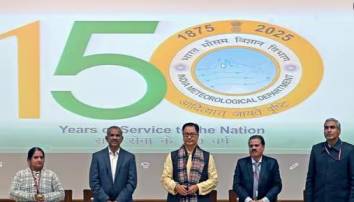Gearing up for change: On IMD and weather analyses having contemporary relevance
India needs region-specific plans to improve climate resilience
Earlier this week, the India Meteorological Department (IMD), entered the 150th year of its existence. While at present, it analyses the entire spectrum of climate and weather, from cyclones to fog, it was conceived , in colonial times, to probe the mysteries of the southwest monsoon. The needs were practical. The British administration, concerned about revenues, was intimately aware of the influence of the monsoon on harvests and thus extremely invested in determining whether past observations of wind, rain and sunshine could be used to predict future torrents and droughts . In the years since then, the IMD has collected gargantuan stores of meteorological data that underlie its forecasts of the monsoon. One such analysis of this data by researchers at the Council on Energy, Environment and Water (CEEW) examines monsoon trends at the sub-divisional (tehsil) level, from 1982-2022. This finds that monsoon rainfall is increasing in more than half, or 55%, of India’s roughly 4,400 tehsils. About 11% of them saw decreasing rainfall. In those tehsils, about 68% experienced reduced rainfall in all four monsoon months, while 87% showed a decline during the June and July -- crucial for the sowing of kharif crops. Most of these tehsils are in the Indo-Gangetic plains, which contribute to more than half of India’s agricultural production, northeastern India, and the Indian Himalayan region.
The study also found that 30% of India’s districts witnessed several years of deficient rainfall years and 38% many years of excessive rainfall. Some tehsils in Rajasthan, Gujarat, central Maharashtra, and parts of Tamil Nadu that historically were dry were also getting wetter . There were also changes underway in the northeast monsoon, which sets in during October, November and December but primarily impacts peninsular India. The northeast monsoon rain has increased by more than 10% in the past decade (2012-2022) in approximately 80% of tehsils in Tamil Nadu, 44% in Telangana, and 39% in Andhra Pradesh, respectively. The southwest monsoon accounts for nearly 76% of India’s annual rainfall, with about 11% from the north-east monsoon. That India’s monsoons are increasingly prone to long, dry-spells and punctuated by torrential wet-spells is well documented though how much of it can be explained by natural variability and how much from global warming is an active area of research. While revenue extraction guided colonial interest in weather at the regional levels, such analyses have a new, contemporary relevance. This is to make region-specific plans to improve climate resilience and channel necessary funds and resources. Prioritising regional and sub-district forecasts over national ones, would be a commendable step forward by the government.
